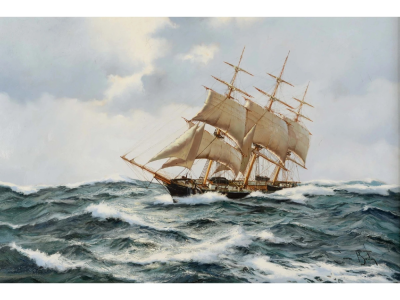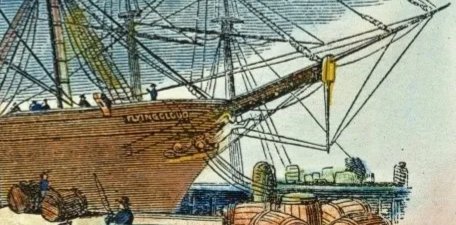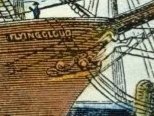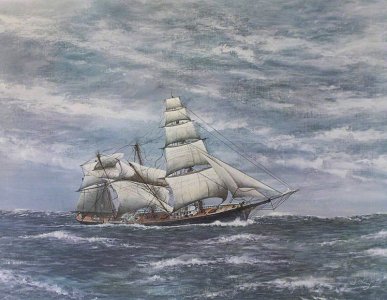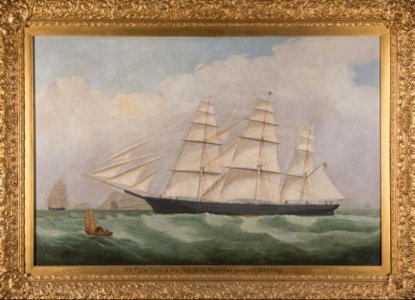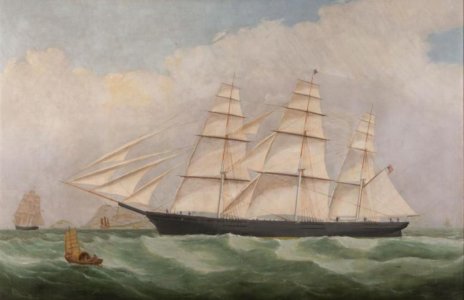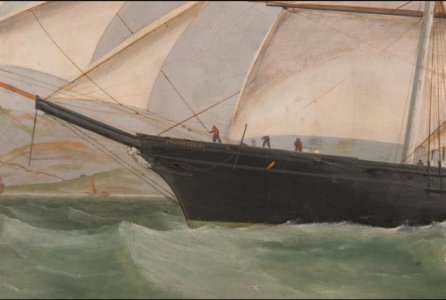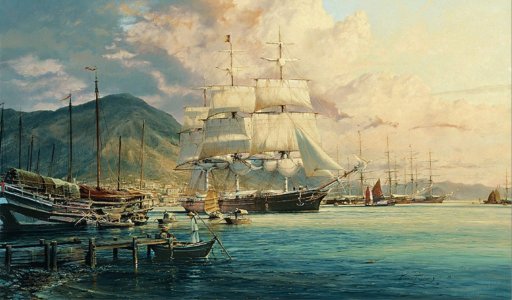- Joined
- Jun 29, 2024
- Messages
- 1,407
- Points
- 393

Sorry, but I suggest that this otherwise beautiful painting is too heavy on the romance! I can’t imagine even a hard driving master sailing a ship in this kind of sea with all sails including studding sails flying. Once a ship reached hull speed, about 1.35 times the square root of waterline length adding sail area was pointless and dangerous . I believe that studding sails were used primarily to add sail area to get the ship through the doldrums. These Clipper ship speed records are based on two types of records; daily runs, and port to port days logged. In the first case this would have been in favorable strong winds but the second would have encompassed all kinds of weather. Saving a day or two getting through the doldrums was better than risking loss of gear in strong winds. These hard driving skippers were first and foremost professionals. Carrying away gear did not result in quick voyages.
Roger
Roger




